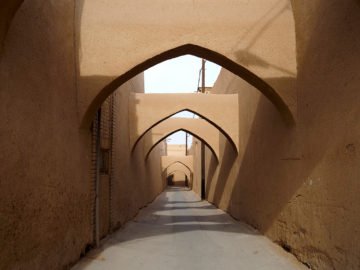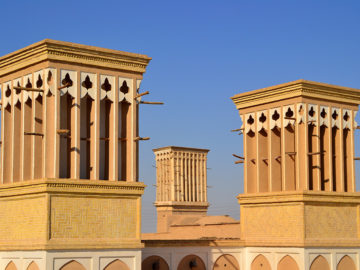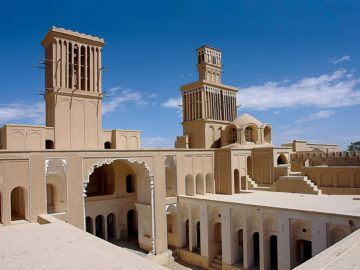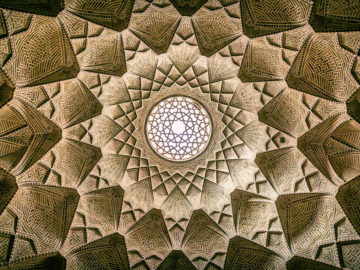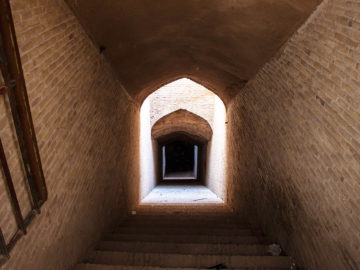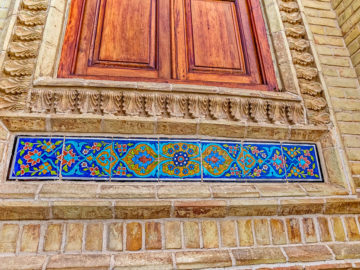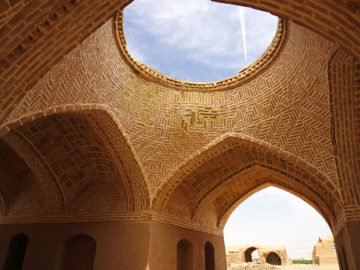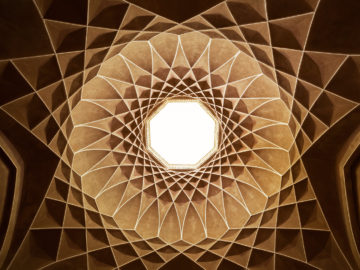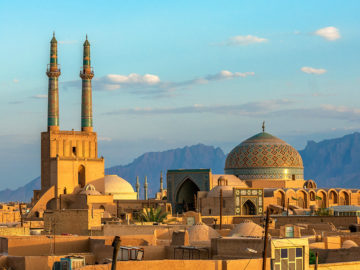
Located in the heart of Iran plateau, the city of Yazd was close to the traditional Silk and Spice Roads. Residents of Yazd have been adapting themselves to live in this arid land for thousands of years. By employing indigenous techniques, qanat to draw underground water, Badgir or wind-catcher to cool their houses, people of Yazd have sustainably used their limited available natural resources to survive in the desert.
Yazd is also known as the city of wind-catchers. In the past, every house had wind-catcher and so, a forest of win-catchers could be seen above the roofs. Wind-catchers cooled the inside the houses via even small breezes. People of low income had small two-sided wind-catchers while affluents used to construct bigger four-to-eight-sided ones.
Dowlat Abad garden of Yazd has the world’s tallest wind-catcher reaching to some 40 meters with eight sides.
Yazd has also been hosting plenty of Ab Anbars. Ab Anbar is the oldest desert construction for reserving water. Some Ab Anbars were public and made in neighborhoods but some rich people had private Ab Anbars in their houses. Wind-catchers were constructed above some Ab Anbars to circulate air into the water reservoir and keep the water cool and fresh.
The old city of Yazd having kept its authenticity embraces many elements of Iranian urban design such as old houses, bazaar, water reservoir, and mosque. Each district is shaped in different eras in history. The district of Kushk-e Now is famous for its water reservoirs, hosayniya, and bazaar. The fame of Fahadan district is for its narrow and twisting alleys and authentic old houses. Lab-e Khandaq district is also known for its historical constructions such as bazaar Khan, hosayniya, caravanserai, Sa’at or Markar square in the vicinity of Jameh Mosque of Yazd, and its historic houses. Ghale Kohneh, Sar-e Dorah, Chahar Menar, Mosallah, and Yaghoubi are among other historic districts of Yazd.
The historic districts of Yazd are fraught with religious elements. The city has long been one of the most religious towns in the country and a center for Zoroastrianism after the arrival of Islam. However, Islam became the dominant religion gradually, and the Islamic rituals in Yazd gained both national and international reputation. Amir Chakhmaq square and Shah Tahmasb hosayniya played central roles in Safavid and Zand dynasties. Nowadays, several sacred places of Muslims, Zoroastrians, and Jews have turned Yazd into a city of various regions, living in symbiotic peace for centuries.
Historic City of Yazd was registered in UNESCO World Heritage list in 2017.

